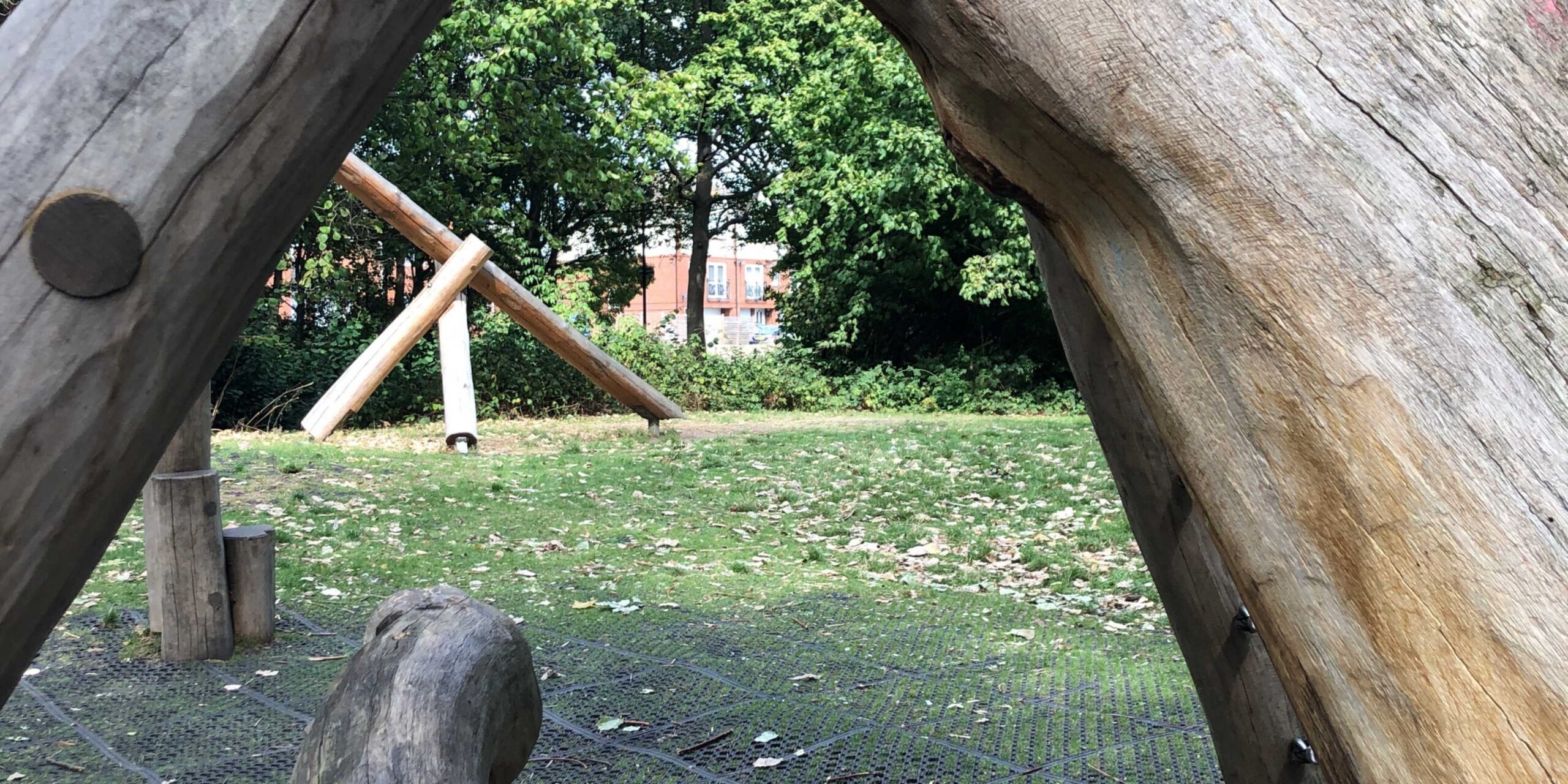This post may contain affiliate links. We may earn money from products we link to in this post.
I love to take my kids to the natural playgrounds in the city.
They are such an inviting place to play! They scream climb me! Jump on me! Play with me!
Maybe i’m a kid at heart, but I love natural playgrounds.
Metal playgrounds are everywhere. They can get a little bit boring because they are all the same.
These kinds of play spaces do not leave a whole lot of room for the kids to get creative and really play.
Luckily, as we learn more about the advantages of nature-based play, a new style of playground has emerged, the natural playground. I am so happy we have some in our city!
Natural playgrounds are becoming more popular, incorporating natural resources such as trees, mud, and water, as well as greater space for imagination.
What Is A Natural Playground anyway?
Natural playgrounds are constructed using natural elements. Because the designers of these play areas are often quite imaginative and playful, the components they incorporate can include trees, stumps, logs, rocks, water, plants, sand, ropes, bridges, and treehouses.
- Rocks and boulder
- Logs, tree stumps, and balance beams
- Natures loose parts
- Slopes and steps and other inclines
- Small shelters like teepees, coves, tunnels
- Features to sit in, on, under
- Digging areas
- Art features
- Outdoor musical instruments
- Winding paths
- Access to water
- Variety of spaces
- Outdoor classrooms
Natural materials and earth tones, on the other hand, are common in all-natural playgrounds. Nature playgrounds’ earthy colour palette and asymmetrical topography may aid to visually reconcile the urban-rural divide.
If you look for natural playgrounds, you’ll find that they range from hybrid natural/manmade elements with nature-inspired play structures to nature purists who solely employ natural elements in the areas. The decision is ultimately made by the school, community, or family.
The Importance Of Natural Playgrounds
Traditional playgrounds provide fewer options for exploration, discovery, learning, and play than natural playgrounds.
Natural playgrounds allow children to move freely and imaginatively about the environment, allowing them to explore, run, jump, climb, crawl, touch, smell, and so on, connecting children with nature while also developing gross motor function, fine motor abilities, imagination, and social skills.
Natural playgrounds are preferred by children because they stimulate more vigorous play and allow for more playtime than traditional playgrounds.
According to research, children who visit standard playgrounds can become bored quickly since the structures limit a child’s inventiveness, challenge, and flexibility.
A nature playground, on the other hand, may feature stones that can be utilized in various ways, trees that can be climbed higher each time, and logs to balance on, run over, or use as sitting.
Nature playgrounds have also been shown to help kids to think about their safety. The majority of the dangers of injury have been eliminated in traditional playgrounds.
Furthermore, several scientists, lawmakers, and parents are concerned about the health impacts of some of the materials used in traditional playgrounds. The crumb rubber flooring material made from recycled tires and used in playgrounds across the United States, in particular, can contain heavy metals such as lead and manganese, volatile organic compounds such as toluene, and polycyclic aromatic hydrocarbons, chemicals linked to cancer and other illnesses at certain levels of exposure.

